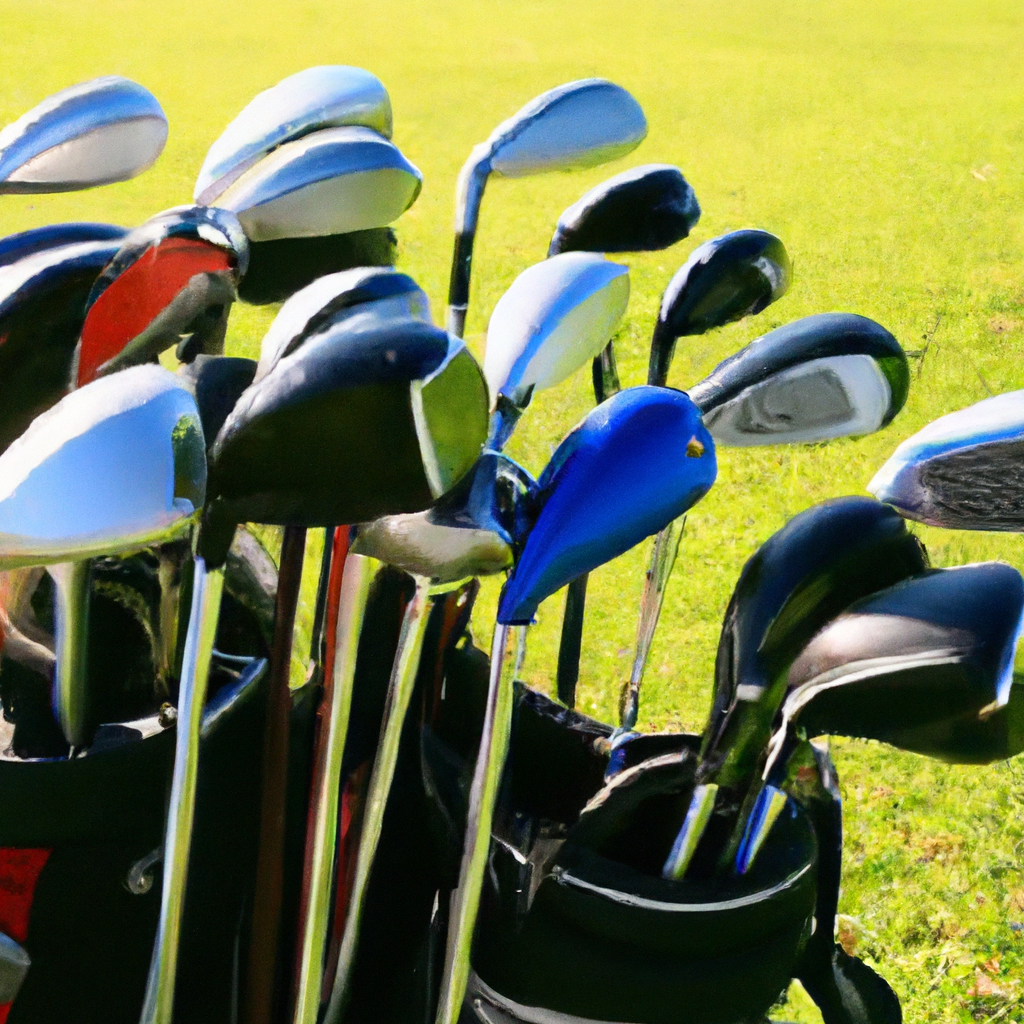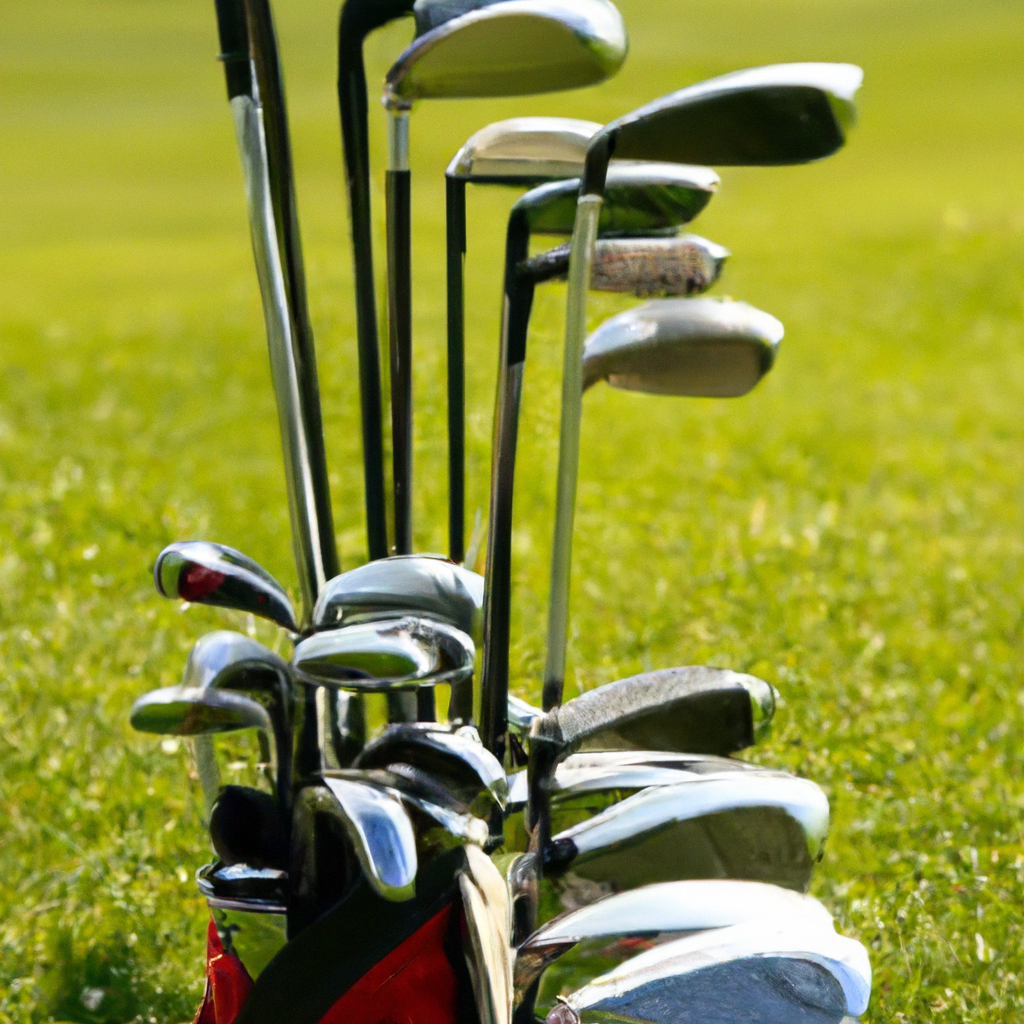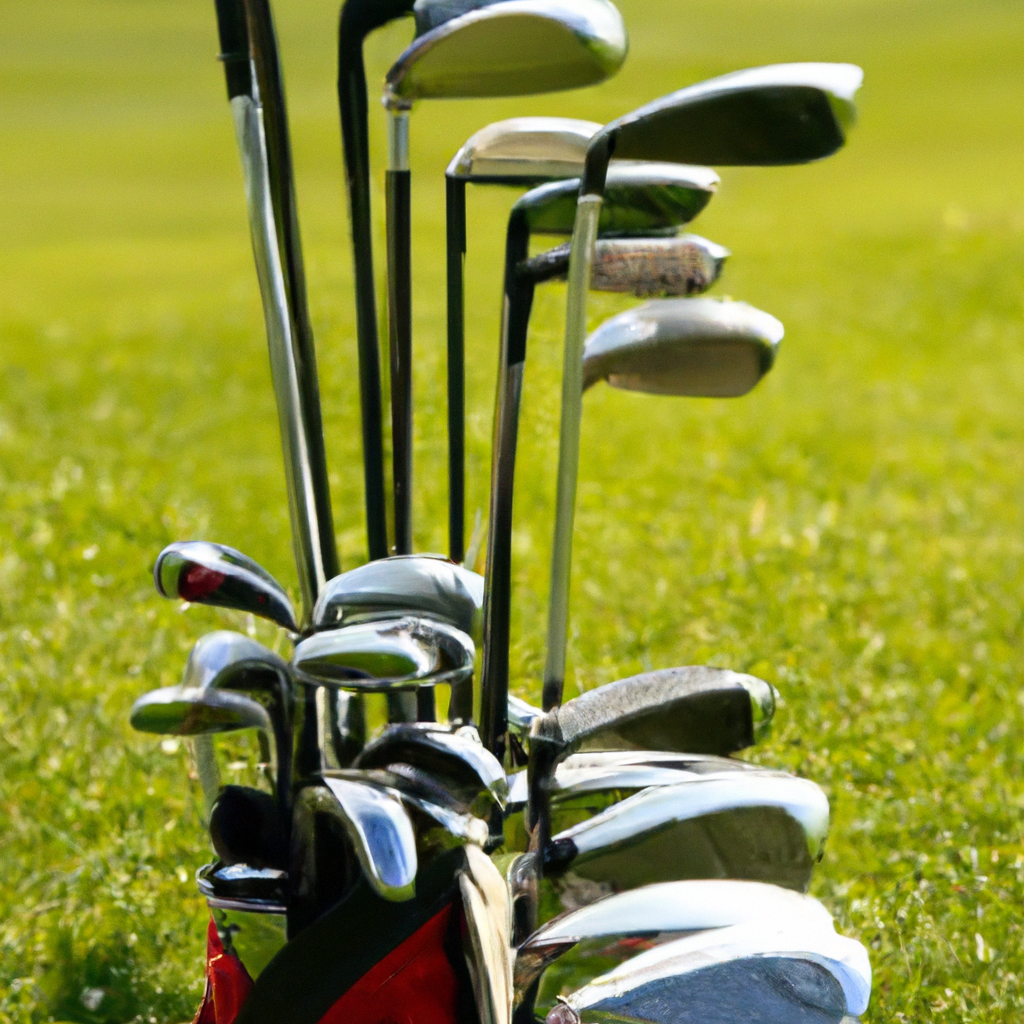We may earn money or products from the companies that may be mentioned in this post.
Are you feeling overwhelmed by the vast selection of golf clubs available? Worry not, as this article is here to help you navigate the world of golf club selection. Choosing the right golf club for your game can make a significant difference in your performance on the course. With various types of clubs to consider, understanding their unique characteristics and how they can enhance your swing is key. Whether you’re a beginner or a seasoned player looking to improve your skills, read on to discover valuable tips and insights to help you select the perfect golf club for your game.

Factors to Consider when Choosing a Golf Club
When it comes to golf, the right choice of clubs can make all the difference in your game. With so many options available, it’s important to consider several factors before purchasing new clubs. Factors such as player skill level, club design, clubhead material, shaft flexibility, clubhead loft, grip size and material, budget, personal preference, weather conditions, and course layout all play a role in determining the best golf club for you.
Player Skill Level
Player skill level is one of the most important factors to consider when choosing a golf club. There are three main skill levels: beginner, intermediate, and advanced.
Beginner
If you’re new to golf or just starting out, it’s recommended to choose clubs that provide forgiveness and are easy to control. Cavity back irons and hybrids are great options for beginners, as they offer a larger sweet spot and increased forgiveness.
Intermediate
For those who have some experience in golf and are looking to improve their skills, a combination of cavity back irons and blade irons can be a good choice. This allows for more control and shot shaping abilities.
Advanced
Advanced players typically have a higher skill level and prefer clubs that offer more shot control and workability. Blade irons and traditional woods may be the preferred choice for advanced players.
Club Design
The design of a golf club plays a significant role in its performance. Each design offers unique characteristics that can suit different playing styles.
Blade Irons
Blade irons, also known as muscle-back irons, are designed for advanced players who prefer maximum control and shot-shaping abilities. These irons have a smaller sweet spot and require more precision in ball striking.
Cavity Back Irons
Cavity back irons are designed with a larger sweet spot and more forgiveness. This makes them ideal for beginners and intermediate players who are still working on consistent ball striking.
Hybrids
Hybrids are a combination of irons and fairway woods, offering the forgiveness of irons with the distance of woods. They are great for players who struggle with long irons or need help getting the ball in the air.
Woods
Woods, including drivers and fairway woods, are designed for distance and accuracy off the tee or fairway. They have larger clubheads and a low center of gravity, making them suitable for players of all skill levels.
Clubhead Material
The material used in the clubhead can affect its performance and feel. There are several options available in the market.
Stainless Steel
Stainless steel clubheads are durable and provide a solid feel. They are a popular choice among golfers due to their affordability and versatility.
Titanium
Titanium clubheads are lighter and stronger than stainless steel, allowing for more forgiveness and distance. They are commonly found in drivers and fairway woods.
Graphite
Graphite clubheads are relatively new in the golf industry. They are made using layers of carbon fiber, resulting in a lightweight and strong clubhead. Graphite clubheads are often used in drivers to maximize swing speed.
Composite Materials
Composite clubheads are made from a combination of materials, such as carbon fiber and titanium. These clubs offer a combination of strength, forgiveness, and lightweight construction.

Shaft Flexibility
The flexibility of the shaft can greatly impact the performance and feel of a golf club. It affects the trajectory and accuracy of your shots.
Extra Stiff
Extra stiff shafts are designed for players with high swing speeds. They provide more control and accuracy, but may feel harsh for players with slower swing speeds.
Stiff
Stiff shafts are suitable for players with moderate swing speeds. They offer a good balance between control and distance.
Regular
Regular shafts are the most common and suitable for players with average swing speeds. They provide a good balance between control, distance, and feel.
Senior
Senior shafts are designed for players with slower swing speeds. They offer more flex, allowing for increased distance and higher launch angles.
Ladies
Ladies shafts are specifically designed for female golfers with slower swing speeds. They have more flex and lighter weights, enabling increased distance and control for women.
Clubhead Loft
The loft of a golf club refers to the angle of the clubface that determines the trajectory and distance the ball will travel.
Wedges
Wedges have the highest loft among all golf clubs, usually ranging from 45 to 64 degrees. They are used for short approach shots and shots around the green that require height and precision.
Irons
Irons have varying lofts, typically ranging from 20 to 50 degrees. Lower-numbered irons have lower lofts and are used for longer shots, while higher-numbered irons have higher lofts and are used for shorter approach shots.
Fairway Woods
Fairway woods have lofts ranging from 13 to 19 degrees. They are primarily used for long shots off the fairway or tee, providing distance and accuracy.
Driver
The driver typically has the lowest loft among all clubs, ranging from 8 to 12 degrees. It is designed for maximum distance off the tee, but can be more challenging to control.
Grip Size and Material
The grip of a golf club greatly affects the feel and control of your swing. It is important to choose the right grip size and material that suits your hands and playing style.
Standard Grip
Standard grips are the most commonly used grips. They offer a balanced feel and provide good control for most players.
Midsize Grip
Midsize grips are slightly larger than standard grips, providing more comfort and reducing hand action during the swing. They are suitable for players with larger hands or those who prefer a thicker grip.
Oversize Grip
Oversize grips are the largest grips available. They are designed to reduce grip pressure and increase stability. Oversize grips are recommended for players with arthritis or those who struggle with hand and wrist pain.
Rubber Grips
Rubber grips offer a soft, tacky feel and provide excellent grip in all weather conditions. They are easy to clean and are the most affordable option.
Cord Grips
Cord grips are made by weaving cotton or synthetic fibers into the rubber grip, offering superior traction and moisture absorption. They are commonly used by professional golfers and players who prefer a firmer grip.
Wrap Grips
Wrap grips are made of leather or synthetic materials wrapped around the shaft. They provide a comfortable and cushioned feel, absorbing shock and reducing hand fatigue.
Budget
Your budget is an important factor to consider when purchasing golf clubs. The price range can vary greatly depending on the brand, material, and quality of the clubs.
Entry-Level
Entry-level clubs are typically more affordable and designed for beginners or occasional golfers. They offer basic features and are a good choice for those on a tight budget.
Mid-Range
Mid-range clubs offer a balance between affordability and performance. They are suitable for intermediate players who want better quality clubs without breaking the bank.
High-End
High-end clubs are top-of-the-line and often used by professional golfers. They are made with premium materials and advanced technologies, providing superior performance and customization options.
Personal Preference
Personal preference plays a significant role in choosing the right golf club. Here are a few factors to consider when it comes to personal preference:
Preferred Brand
Some golfers have brand loyalty and prefer to stick with a specific brand. Each brand has its unique characteristics and designs, so finding a brand that aligns with your preferences can greatly enhance your playing experience.
Preferred Look
The visual appearance of a club can impact your confidence and enjoyment on the course. Whether you prefer a traditional or modern look, finding a club that appeals to your aesthetic taste can make a difference in your game.
Preferred Feel
The feel of a club is subjective and varies from player to player. Some golfers prefer a soft and buttery feel, while others prefer a crisp and solid feel at impact. Testing out different clubs and considering how they feel in your hands can help you choose the right one for your game.
Weather Conditions
Weather conditions can greatly impact your game, and choosing clubs that perform well in specific conditions can make a difference.
Hot and Dry
In hot and dry conditions, golf balls tend to bounce and roll more. Choosing clubs with lower lofts and less spin can help control the trajectory and distance of your shots.
Cold and Wet
In cold and wet conditions, golf balls tend to lose distance and spin. Choosing clubs with higher lofts and more forgiveness can help launch the ball higher and reduce the impact of adverse weather conditions.
Windy
In windy conditions, clubs with lower lofts and less spin can help counteract the effects of the wind. Additionally, choosing clubs with a low center of gravity can provide more stability in gusty conditions.
Course Layout
The layout of the golf course you frequently play on should also be considered when choosing your clubs.
Narrow Fairways
If you often find yourself golfing on courses with narrow fairways, it may be beneficial to choose clubs that offer more accuracy and control. Cavity back irons and fairway woods can help you navigate tight spots with ease.
Wide Open Fairways
Wide open fairways allow for more flexibility in club selection. Choosing clubs that provide distance and forgiveness, such as hybrids and woods, can help you take advantage of the wide playing area.
Lots of Water Hazards
Courses with many water hazards require precision and accuracy. Clubs that offer forgiveness and control, such as cavity back irons, can help you avoid costly mistakes near water hazards.
Many Bunkers
Courses with numerous bunkers call for clubs that offer good bunker play and shot-making abilities. Wedges with higher lofts and cavity back irons can help you get out of bunkers with ease.
Elevated Greens
Elevated greens require clubs that provide high trajectory and soft landings. Choosing wedges and high-lofted irons can help you stop the ball on elevated greens, preventing it from rolling off the back.
In conclusion, choosing the right golf club involves considering several factors such as player skill level, club design, clubhead material, shaft flexibility, clubhead loft, grip size and material, budget, personal preference, weather conditions, and course layout. By carefully evaluating these factors and taking into account your individual needs and preferences, you can select golf clubs that will enhance your performance and enjoyment on the course. Remember to try out different clubs before making a final decision, as what works for one golfer may not work for another. Happy golfing!
